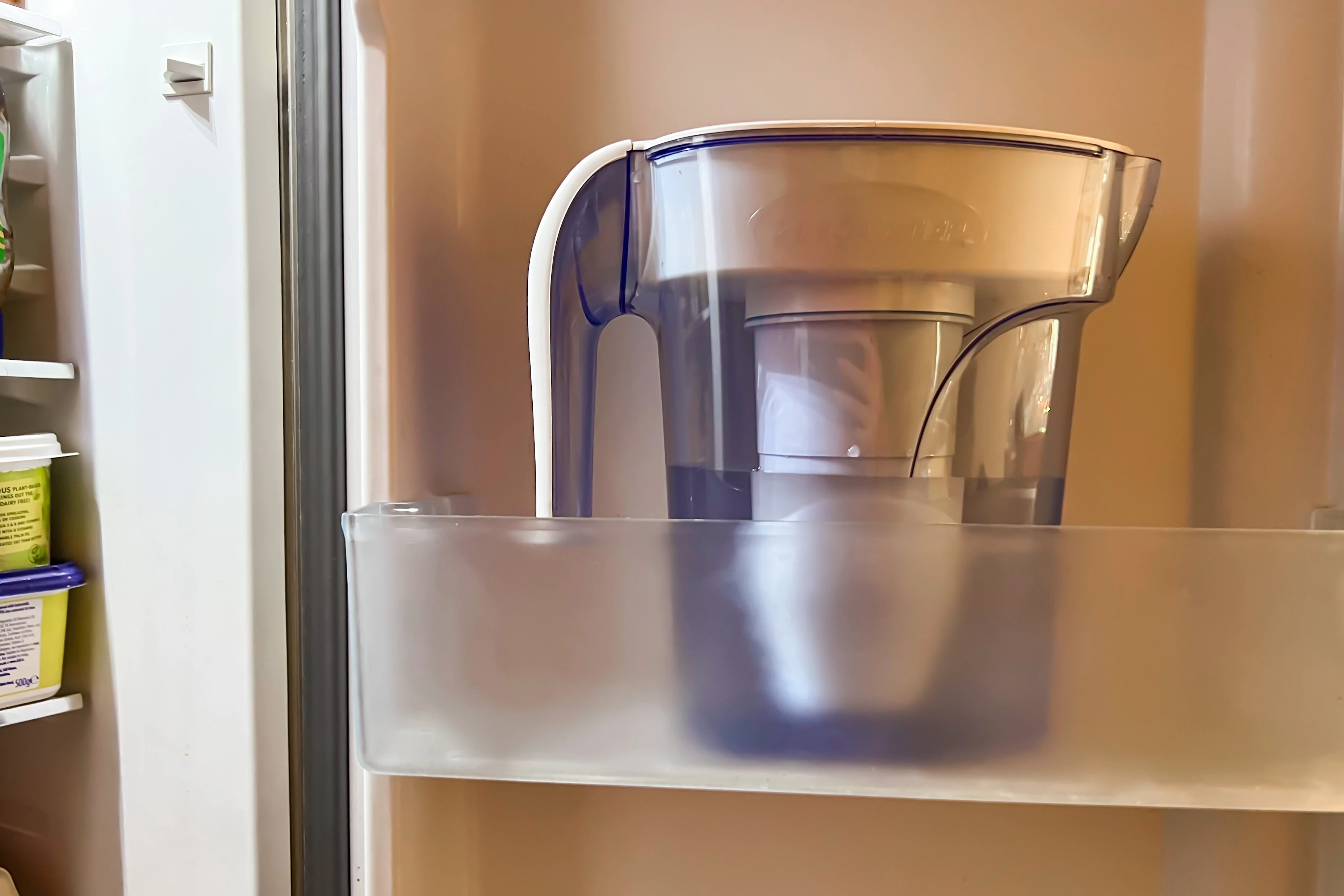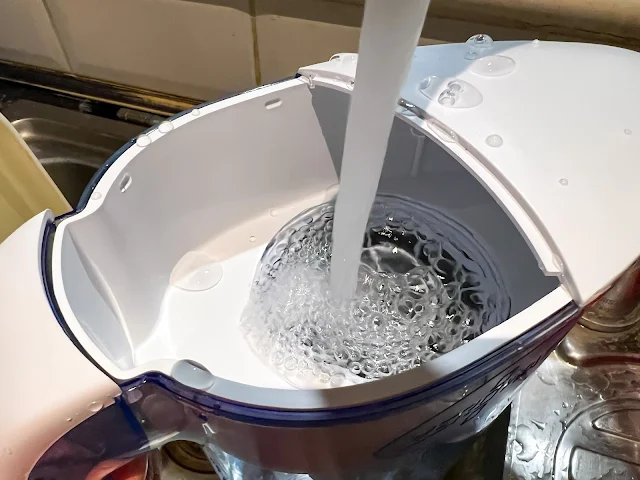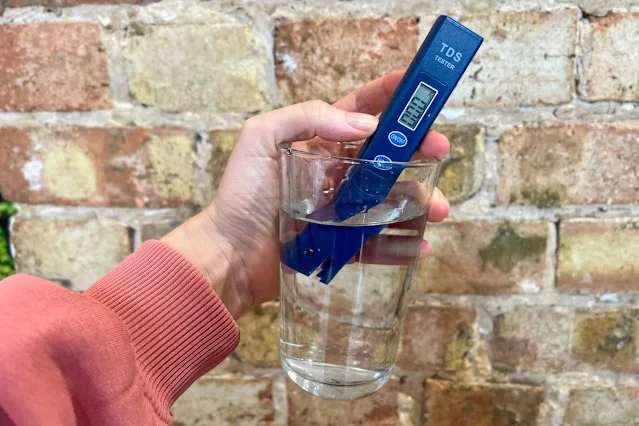(Gifted). In the UK we tend to take tap water for granted. You turn on the tap and water comes out. And water is water right? What comes out of the taps in my house is pretty much the same as what comes out of the taps in your house isn’t it? Perhaps not. I’m pretty particular about tap water, having lived in the same region most of my life I like my tap water, but I struggle to drink the water at my in-laws house which is less than 50 miles away. My partner much prefers the water at his parent's house because it is what he grew up with.
It’s interesting that although tap water in the UK is ok to drink there is a lot of variation between what comes out of the tap in different areas. Very few people know what is actually in their tap water although if you are in a hard water area you will be familiar with the annoying build up of scale inside your kettle and elsewhere caused by the high levels of calcium and magnesium.
 |
| We received a 7 cup ZeroWater Jug to Review |
Filtering Water To Remove TDS With ZeroWater
One way to keep your kettle looking clean and to make water taste the same wherever you are is to use a water filter, but not all water filters work the same. Most water filters have a two stage filter which removes around half of dissolved solids, ZeroWater has a fiver stage filtration system which removes virtually all dissolved solids (99.6%) and we were sent one to try.
 |
| ZeroWater jugs come with a 5 stage filter |
How The ZeroWater and The 5 Stage Filter Works
The ZeroWater filter has a layer of activated carbon and oxidation reduction alloy which removes chlorine (chlorine gives water a hint of a disinfectant taste that I particularly struggle with). It then has an Ion Exchange stage where dissolved solids are removed. Dissolved solids in tap water can include aluminium, lead and zinc from old pipes. The remaining three stages remove other contaminants. This means that the water poured from a ZeroWater jug has the same total dissolved solids as purified bottle water.
The jugs are available in various sizes from the 7 cup (1.7 litre) jug which easily fits in the fridge door through to a 12 cup (2.8 litre) jug as well as dispensers which go up to 30 cups (or 7.1 litres). The larger size jugs as well as all the dispensers have a spigot or pull and pour spout so that you can pour water into a glass without lifting the container.
The jugs are really easy to set up: simply take the jug out of the packaging, give it a quick wash, take the filter out of its packaging, give that a rinse and twist it into the jug. You are now ready to fill the jug with tap water.
The water goes through the filter pretty quickly so you can pour yourself a glass of pure tasting water in a few seconds.
 |
| The ZeroWater jug is quick to set up and start using |
 |
| The filters are a complex 5 stage system which remove 99.6% of total dissolved solids (TDS) |
How Effective is The ZeroWater System?
The ZeroWater jugs all come with a water quality meter. This is a clever little device that you can put in water and it will tell you the TDS (Total Dissolved Solids) measured in parts per million. These dissolved solids are a combination of minerals, salts and metals which affect how the water tastes.
The main purpose of the meter is so you can check when your filter needs to be changed, but it’s quite fun to measure the TDS in your tap water before and after filtering. When I used it to measure our tap water it measured 311. This is a pretty high level of TDS. I was really impressed that when I measured the water a minute later poured from out of the jug it was 000. I could tell the difference in taste too.
In the UK 7.7 billion single use water bottles are sold each year (figure from 2017). If you buy bottled water because: you don’t like the taste of your water, you prefer cold water from the fridge, or you are concerned about what is in your tap water then a ZeroWater jug could save you money. How much you save will depend on the water quality because the worse your water quality the more often you will need to replace your filter. They recommend changing the filter when the meter reads 006. Based on our water quality the filter should be able to filter about 30 to 55 litres of water, but if your water’s TDS is 200 it should filter more than twice that amount before it needs changing.
 |
| Our tap water has a reading of 311 TDS on the meter |
 |
| Our tap water after going through the ZeroWater filter gave a reading of 000 |
Is It Bad To Have TDS In Your Tap Water?
Whether dissolved solids in drinking water are a problem depends on what they are. While it is easy to check the overall level of TDS, to find out exactly what is in your water would be much more complex. Not all dissolved solids in water are bad. In fact minerals like magnesium and calcium (yes those same minerals that cause hard water) are good for our body. Drinking water with essential minerals in is an easy way to help us get what our body needs and if you remove them from what you drink you need to ensure you are consuming them through your diet. Despite the good things in water there can be more problematic dissolved solids too. There are the chemicals that are used to treat tap water (like chlorine) and potentially metals like lead from old pipes and pesticides. These can make water taste unappealing and also have potential to cause some harm to your health. In hard water areas it’s also frustrating to get a build up in your kettle and iron. Having low TDS can make for a better tasting cup of tea and coffee which is definitely worth a try too.
 |
| ZeroWater jugs give you purer tasting water |
ZeroWater filter jugs are available direct from ZeroWater


















No comments
Thanks for your comment (unless it's spam in which case, why?)